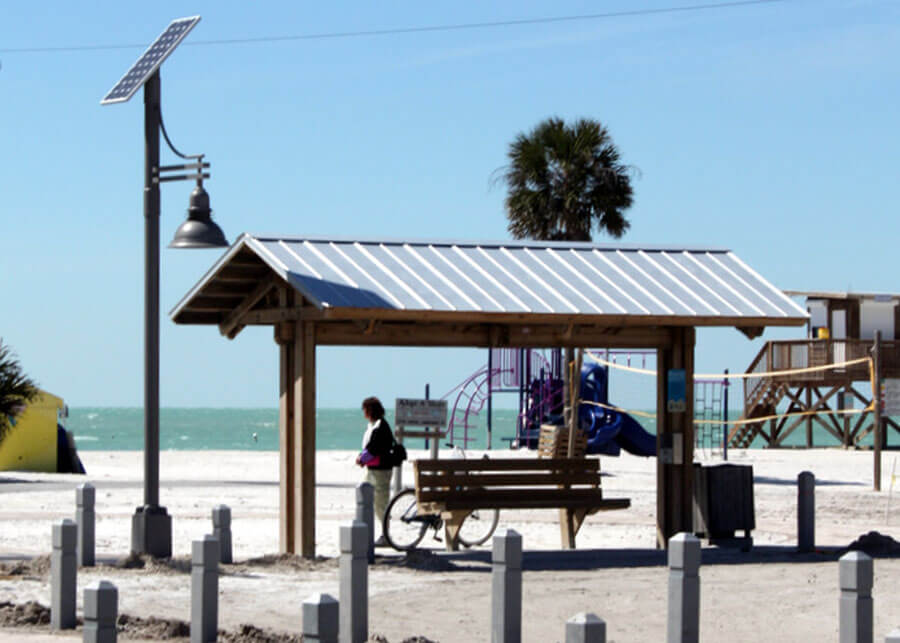The Ultimate Guide to Solar Lighting for Parks & Playgrounds
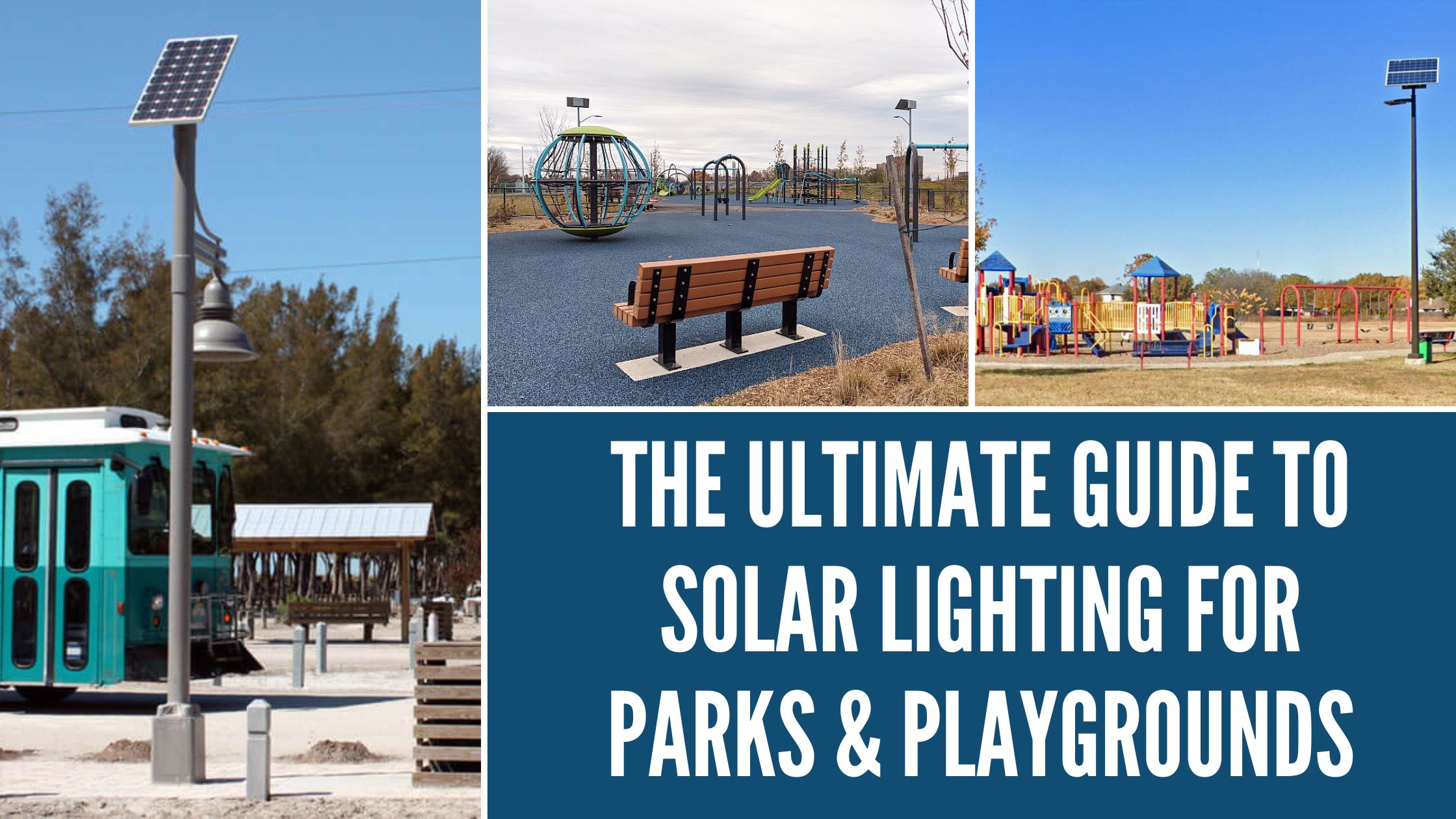
Contents
Parks and playgrounds are essential public spaces that provide recreation, exercise, and relaxation for communities. However, these spaces can be underutilized, especially after dark when visibility is limited. Installing lighting systems in parks and playgrounds can significantly improve safety, increase usage, and enhance the overall experience for visitors.
One option for lighting these spaces is solar lighting systems. Solar lighting systems are becoming increasingly popular due to their many benefits, including reduced energy costs, environmental sustainability, and ease of installation. In addition, they are an excellent choice for parks and playgrounds because they can be installed in remote areas without access to electricity and can be customized to fit the specific needs of each project.
This ultimate guide will explore how to design and set up a solar lighting solution for parks and playgrounds. We will also discuss the various projects within the scope of a park, such as pathways, parking lots, and signs, and how solar lighting can enhance each of these areas. This guide is intended for people developing a park or playground or parks and recreation facility maintenance personnel looking for an eco-friendly, cost-effective lighting solution for their projects.
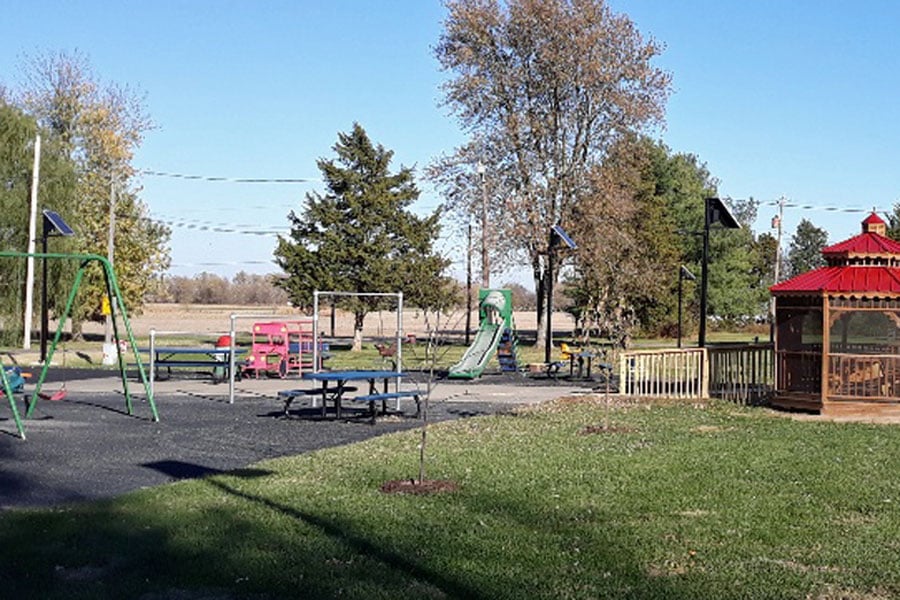
Designing a Solar Lighting System for Parks and Playgrounds
Several factors should be considered when designing a solar lighting system for parks and playgrounds. These include the size of the park, its usage, the light level requirements for various sections, the operational requirements, and the placement of the lights.
First, consider the size of the park or playground. This will help determine the number of lights needed for adequate lighting coverage. A larger park or playground will require more lights than a smaller one. It is essential to ensure enough illumination to ensure safety and security for visitors.
Next, consider the usage of the park or playground. Will it be used primarily during the day or at night? What activities take place in the space? This information will help determine the brightness level needed for the lights. For example, pathways tend to have lower levels of illumination compared to that of a parking lot or a soccer field. Understanding the various components of the park and the light level requirements of each section will help the solar designer set up the appropriate system.
The placement of the lights is also crucial. Lights should be strategically placed to provide maximum visibility and safety for visitors. Having a lighting engineer do a complete lighting layout can show exactly where the lights need to be installed to produce the required illumination. It is also essential to consider any obstacles or obstructions that may block the sunlight and reduce the effectiveness of the solar panels, such as trees, buildings, etc.
Finally, it is crucial to calculate the number of solar panels and batteries needed for the system. This will depend on the number and type of lights chosen and the amount of sunlight the panels will receive. Again, a professional solar lighting system manufacturer can help with this calculation.
Overall, designing a solar lighting system for a park or playground requires careful consideration of several factors. By planning and designing the system correctly, you can ensure that it provides adequate lighting coverage and enhances the safety and overall experience for visitors.
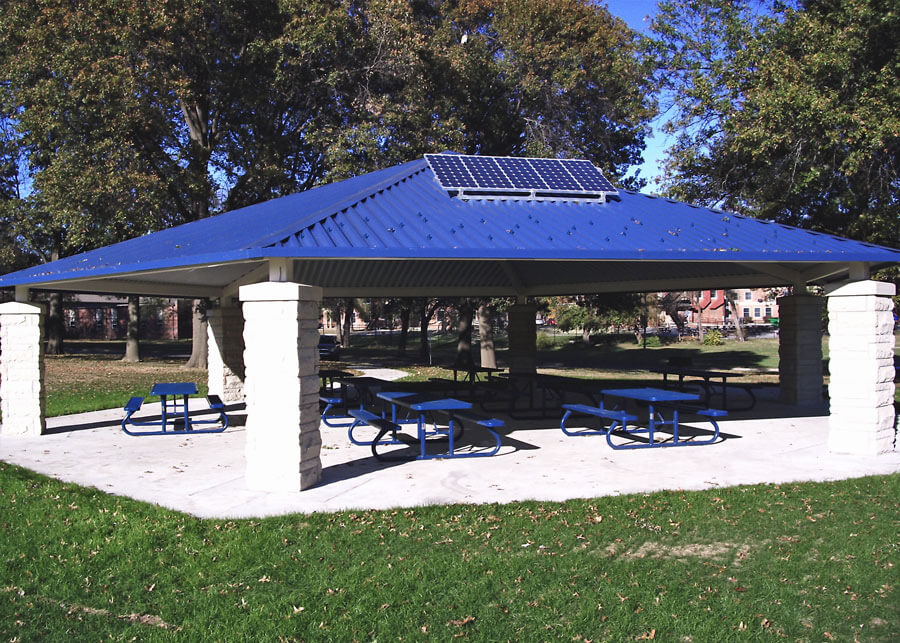
Benefits of Using Solar Lighting Systems
There are several benefits to using solar lighting systems in parks and playgrounds. These include:
- Lower cost compared to traditional lighting systems: Solar lighting systems do not require an external power source, which means lower installation and operating costs.
- Environmentally friendly and sustainable: Solar lighting systems are powered by renewable energy, making them an eco-friendly and sustainable lighting solution.
- Reduced maintenance and operating costs: Solar lighting systems require minimal maintenance and have lower operating costs compared to traditional lighting systems.
- Increased safety and security: Adequate lighting in parks and playgrounds improves safety and security for visitors, reducing the risk of accidents and unwanted activities.
Projects within the Scope of a Park
Solar lighting can be used to enhance various projects within the scope of a park or playground. These include:
Lighting pathways to improve safety and visibility
One of the most important functions of lighting in a park or playground is to enhance safety and visibility. Well-lit pathways can greatly improve the safety of visitors by making it easier to navigate the park or playground, reducing the risk of accidents and unwanted incidents. With solar lighting systems, parks and playgrounds can create illuminated pathways that provide a safe and comfortable environment for visitors to enjoy.
Illuminated pathways also help to increase visibility throughout the park or playground. By strategically placing solar lighting along walkways and pathways, visitors can clearly see their surroundings and easily navigate the space. This can be particularly important in areas with uneven terrain or obstacles that may be difficult to see in low light conditions.
Another advantage of solar lighting for pathway illumination is the ability to adjust the lighting levels easily. For example, the lighting can be dimmed during quieter hours to save energy and then automatically brightened during peak times to ensure maximum visibility and safety.
By installing solar lighting along pathways, parks and playgrounds can provide visitors a safer and more enjoyable experience while reducing the risk of accidents and unwanted activities. Additionally, solar lighting systems offer an energy-efficient and sustainable lighting solution that can save parks and playgrounds money on electricity and maintenance costs over time.
Illuminating parking lots to increase security and convenience
Parking lots are a crucial aspect of any park or playground. They provide a convenient space for visitors to park their cars while they enjoy the park's amenities. However, parking lots can also be a potential area for accidents and unwanted activities if they are poorly lit or unsecured. Fortunately, solar lighting systems can help address these concerns and provide numerous benefits to park and playground visitors.
One of the main advantages of solar lighting for parking lots is its increased visibility. Adequate lighting can make it easier for visitors to navigate the parking lot, reducing the risk of accidents and enhancing overall safety. Additionally, well-lit parking lots can deter potential criminal activity and improve the overall security of the park or playground.
Another benefit of solar lighting for parking lots is the convenience it provides to visitors. By illuminating the area, visitors can find their cars more efficiently and safely, even during evening hours. This can be particularly important for visitors unfamiliar with the park or playground and needing help finding their way.
Solar lighting systems for parking lots can also be designed to include motion sensors or dimming capabilities. This means that the lighting can automatically turn on when someone enters the parking lot or be adjusted to lower levels during quieter hours, reducing energy costs and extending the lifespan of the lighting system.
Overall, installing solar lighting in parking lots, parks and playgrounds can improve the safety and security of visitors while also providing them with the convenience of a well-lit and easily navigable space. Additionally, solar lighting systems offer a sustainable and cost-effective solution that can save parks and playgrounds money on electricity and maintenance costs over time.
Lighting signs to make them more visible and legible
Signs are crucial in helping visitors navigate and enjoy a park or playground. They provide information about the park's amenities, directions to various attractions, and important safety information. However, poorly lit signs or difficult to read can lead to confusion and frustration, potentially resulting in a negative visitor experience. Fortunately, solar lighting systems can help address these concerns and provide numerous benefits to park and playground visitors.
One of the main advantages of solar lighting for signs is increased visibility. Adequate lighting can make it easier for visitors to see and read signs, reducing the risk of getting lost and enhancing the overall visitor experience. Illuminated signs can also help to highlight important information and create a welcoming and inviting atmosphere for visitors.
Another benefit of solar lighting for signs is energy efficiency. Solar lighting systems can be designed to operate using renewable energy from the sun, reducing electricity costs and minimizing the carbon footprint of the park or playground. Additionally, solar lighting systems require minimal maintenance, reducing upkeep costs and saving time for park and playground maintenance staff.
Overall, by installing solar lighting for signs in parks and playgrounds, visitors can enjoy a safer and more enjoyable experience while reducing the risk of getting lost or frustrated. Additionally, solar lighting systems offer an energy-efficient and sustainable lighting solution that can save parks and playgrounds money on electricity and maintenance costs over time.
Highlighting architectural features and landscape elements
In addition to providing functional lighting for safety and navigation, solar lighting can also be used to highlight the aesthetic beauty of a park or playground. By illuminating architectural features and landscape elements, solar lighting can enhance the overall experience for visitors and create a more inviting and memorable atmosphere.
Architectural features such as buildings, bridges, and sculptures can be effectively highlighted with solar lighting. This can draw visitors' attention to these unique and often intricate structures, allowing them to appreciate the beauty and craftsmanship of the design. Illuminated architectural features can also serve as landmarks, making it easier for visitors to navigate the park or playground.
In addition to architectural features, solar lighting can also be used to highlight landscape elements such as trees, shrubs, and flower beds. This can create a visually stunning display of the park's natural beauty, while also providing additional lighting to enhance safety and visibility. Solar lighting can also be used to accentuate water features such as fountains and ponds, creating a tranquil and serene atmosphere for visitors to enjoy.
Overall, solar lighting can be a powerful tool for enhancing the aesthetic appeal of a park or playground. By illuminating architectural features and landscape elements, solar lighting can create a more inviting and memorable atmosphere for visitors while also providing functional lighting for safety and navigation. Additionally, solar lighting systems offer a sustainable and cost-effective lighting solution that can save parks and playgrounds money on electricity and maintenance costs over time.
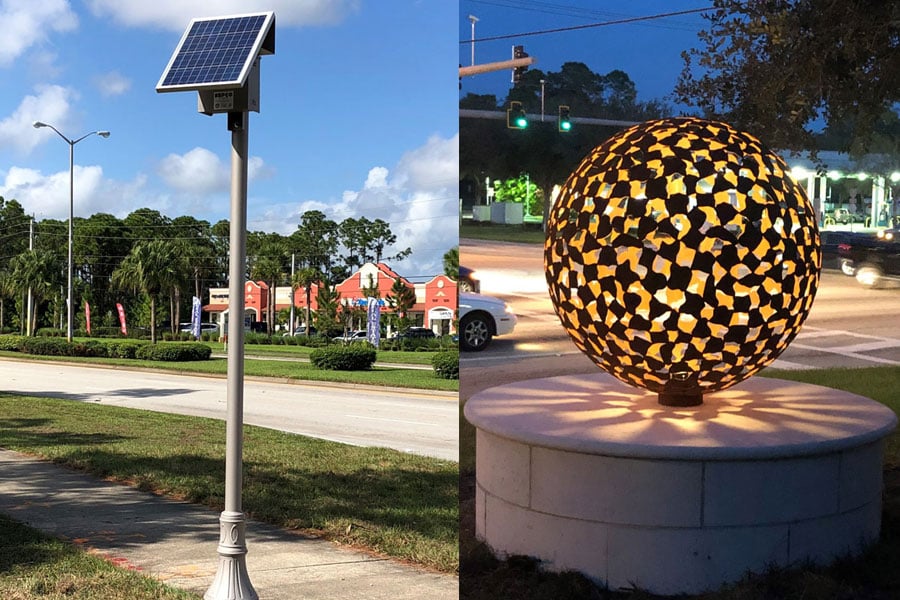
Installation and Maintenance of Solar Lighting Systems
Installing and maintaining a solar lighting system requires careful planning and execution. Here are some tips for ensuring a successful installation and maintenance:
- Work with a professional installer: A professional installer can help design and install the solar lighting system correctly, ensuring it meets your needs and provides optimal performance. They understand how the system goes together and what goes into setting it up in the field to operate correctly. Most electrical contractors can easily install an off-grid solar lighting system.
- Choose high-quality equipment: Selecting high-quality solar panels, batteries, and fixtures will ensure the system lasts longer and requires minimal maintenance. This is definitely a "you get what you pay for" scenario. Many cheap lights on the market will leave you in the dark. Make sure to review the system specifications and ensure that the provided solution will adequately meet the project needs.
- Follow the manufacturer's maintenance instructions: Regular maintenance is essential to ensure the system operates at peak performance. Most commercially designed systems have a maintenance schedule of once every 5 years or more. This is a good time to check over the system completely, clean the panel, dust off the fixture, check all the connections, etc. Follow the manufacturer's instructions for cleaning and maintenance to keep the system in optimal condition.
Solar lighting systems are an eco-friendly, cost-effective, and sustainable lighting solution for parks and playgrounds. By carefully designing and installing a solar lighting system, you can enhance visitors' safety, security, and overall experience. We hope this ultimate guide has provided you with valuable information and insights into designing and setting up a solar lighting solution for your next park or playground project.

